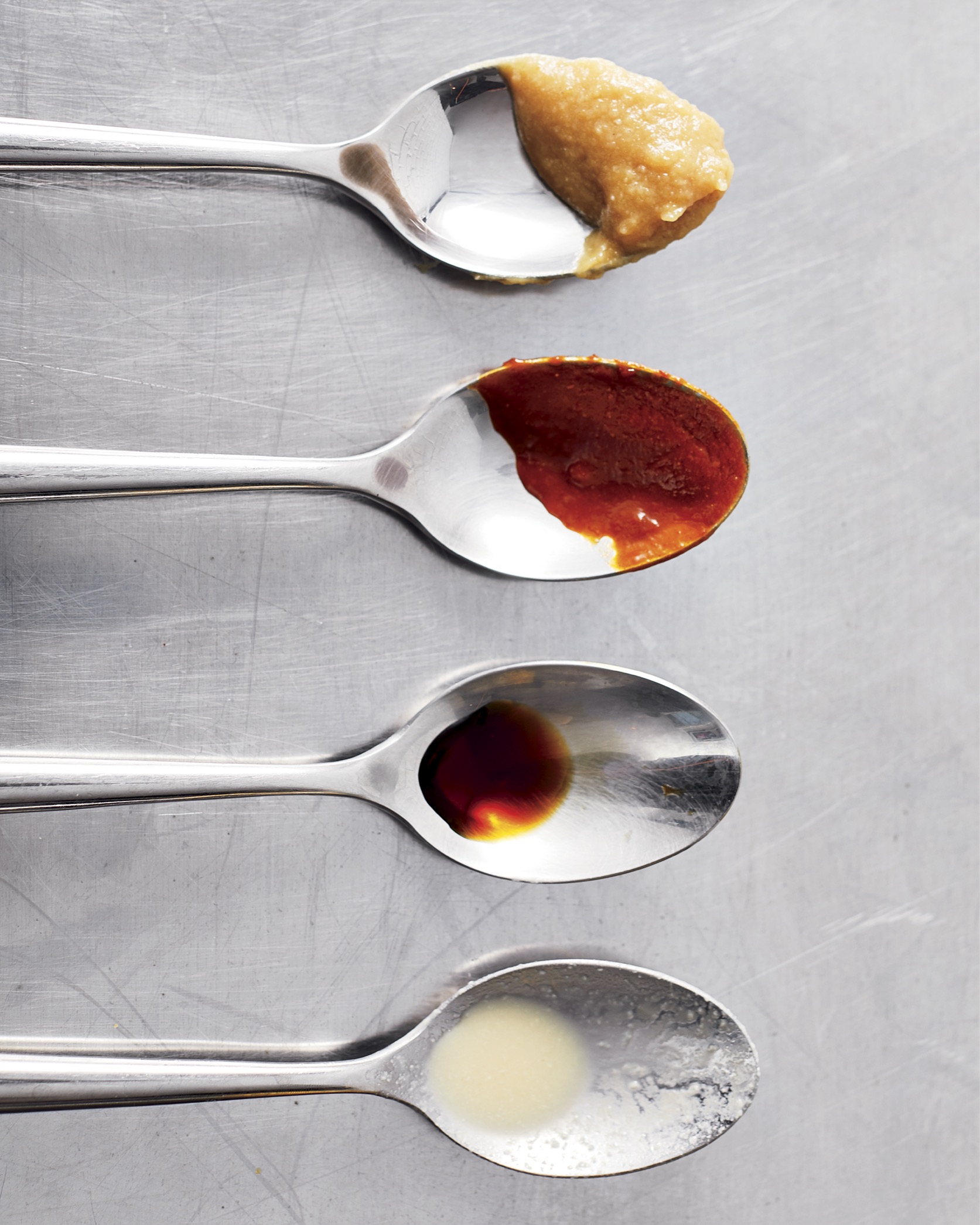
When you’re making your grandma’s chicken soup, you take the bones, water, and mirepoix (onion, celery, carrot) and cook them until you feel the broth is ready. Then you strain it, season it, serve it—and keep the leftovers in the refrigerator until they’re finished. You will never treat ramen that way; all its elements should be kept separate until the moment you serve it. That’s why there’s so much diversity when it comes to ramen.
After you start making ramen, I dare say you will never make chicken soup the same way again.
In ramen, broth can define the style of the bowl, but tare defines the seasoning of the bowl. It is the main seasoning, alongside lesser elements that contribute to flavor.
Tare
Tare is the backbone of a bowl of ramen. Up until the moment you add tare, ramen broth is only bones and water—no salt, no mirepoix, no nothing—and tare is the main seasoning agent. It’s what makes ramen a miso, shio, or shoyu ramen. Although most ramen chefs make their broth in a similar manner, it’s the highly customized, highly prized tares that set ramen chefs apart from one another. These are basic recipes, but as you get more advanced, you can tinker with adding other elements, such as dried seafood and miso.
The most common tares are:
Shio—salt
Shoyu—soy
Miso—fermented beans or wheat
So when do you add your tare? There are infinite variations in the making of these tares, and they are most certainly what differentiate one ramen shop from another. You can season an entire batch of stock if you will be serving it that same day, but I don’t recommend that you ever preseason a batch more than three hours before serving, because it can disrupt the emulsification, almost like a broken sauce. Plus, you may wake up the next day and decide you want to make another style of chicken soup with the remainder of your stock. Seasoning bowl by bowl is the way we do it in the shop and the way I suggest you do it, too, except when it comes to miso, which I will explain further.
Pro Tip: When you make the tare, I strongly recommend doubling or tripling the recipe to make a large batch. Tare is laborious to make, and the salt content allows it to keep for up to a year in a glass or plastic container in the refrigerator or frozen in a ziplock bag.
